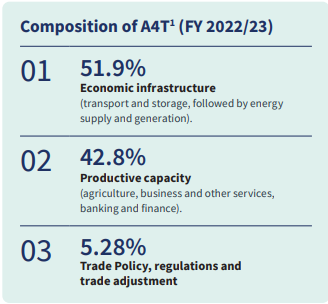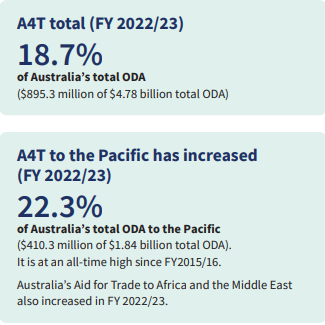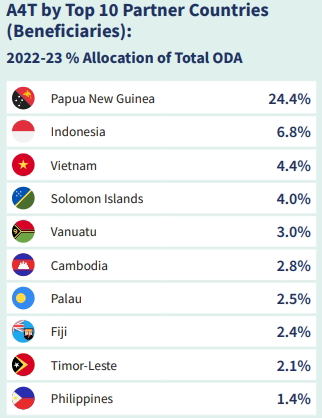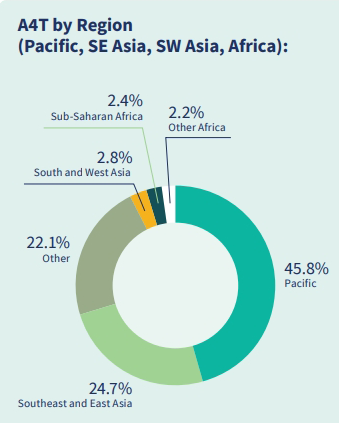Aid for trade supports developing and least developed countries (LDCs) to use trade as a tool for sustainable economic development. It is an important part of the development pathways of these countries, helping to promote future economic sustainability, diversification, and global economic integration.
Aid for trade assists developing countries and LDCs to address challenges related to supply-side constraints, as well as obstacles to hard and soft economic infrastructure development, and improves access to regional and global markets.
Aid for trade also supports developing countries and LDCs to effectively participate in and benefit from the multilateral, rules-based trading system – with the WTO at its core; and the WTO provides a common, transparent, and predictable set of rules upon which to base economic development through trade.
The WTO-led Aid for Trade Initiative was launched at the 2005 Hong Kong World Trade Organization (WTO) Ministerial Conference (MC6). It recognises the importance of trade in driving economic growth and the need to assist developing countries and LDCs to improve their capacity to trade.
The Aid for trade Initiative highlights the role trade can play in development and establishes a regular monitoring and evaluation exercise through the biannual Global Review of aid for trade. The Global Review takes stock of the global state of aid for trade and helps catalyse further funding.
Australia's Aid for Trade
The goal of Australia's aid for trade is to support developing countries and LDCs to effectively use trade as a tool for sustainable, inclusive, and locally-led economic growth.
Australian aid for trade is wide ranging, demand driven, and delivered through multilateral, regional and bilateral programs and partnerships.
In line with Australia’s International Development Policy, Australia’s aid for trade prioritises development impact, gender equality, and sustainability.




